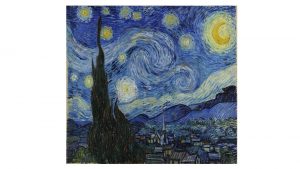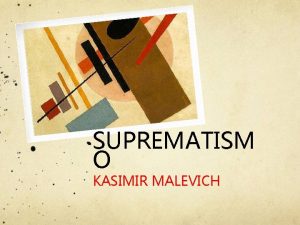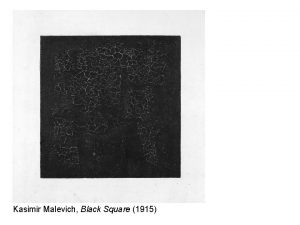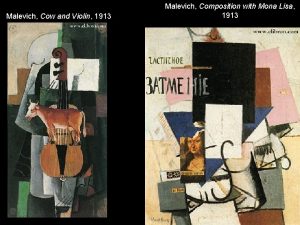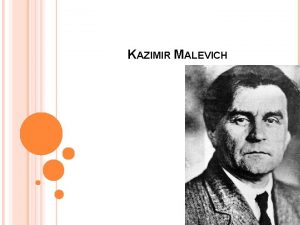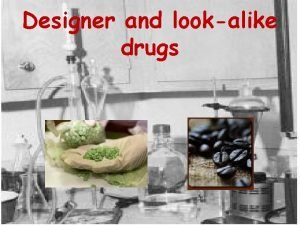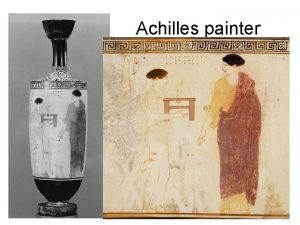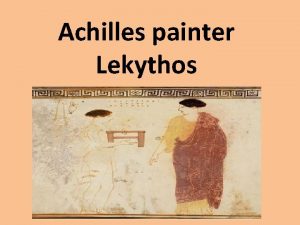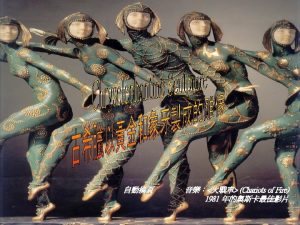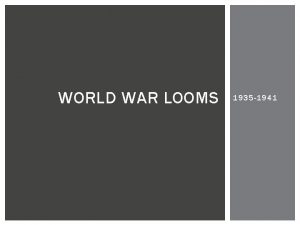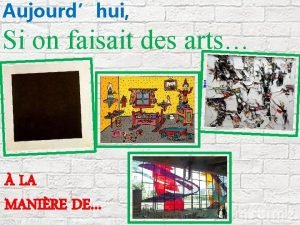Kasimir Malevich 1878 1935 Russian painter and designer




























- Slides: 28







Kasimir Malevich, (1878 -1935) Russian painter and designer, with Mondrian the most important pioneer of geometric abstract art. Born near Kiev; trained at Kiev School of Art and Moscow Academy of Fine Arts; 1913 began creating abstract geometric patterns in style he called suprematism; taught painting in Moscow and Leningrad 1919 -21; published book, The Nonobjective World (1926), on his theory; first to exhibit abstract geometric paintings; strove to produce pure, cerebral compositions; famous painting White on White (1918) carries suprematist theories to absolute conclusion; Soviet politics turned against modern art, and he died in poverty and oblivion. He began working in an unexceptional Post-Impressionist manner, but by 1912 he was painting peasant subjects in a massive `tubular' style similar to that of Léger as well as pictures combining the fragmentation of form of Cubism with the multiplication of the image of Futurism (The Knife Grinder, Yale Univ. Art Gallery, 1912). Malevich, however, was fired with the desire `to free art from the burden of the object' and launched the Suprematist movement, which brought abstract art to a geometric simplicity more radical than anything previously seen. He claimed that he made a picture `consisting of nothing more than a black square on a white field' as early as 1913, but Suprematist paintings were first made public in Moscow in 1915 and there is often difficulty in dating his work. (There is often difficulty also in knowing which way up his paintings should be hung, photographs of early exhibitions sometimes providing conflicting evidence. ) Malevich moved away from absolute austerity, tilting rectangles from the vertical, adding more colors and introducing a suggestion of the third dimension and even a degree of painterly handling, but around 1918 he returned to his purest ideals with a series of White on White paintings. After this he seems to have realized he could go no further along this road and virtually gave up abstract painting, turning more to teaching, writing, and making three-dimensional models that were important in the growth of Constructivism. In 1919 he started teaching at the art school at Vitebsk, where he exerted a profound influence on Lissitzky, and in 1922 he moved to Leningrad, where he lived for the rest of his life. He visited Warsaw and Berlin in 1927, accompanying an exhibition of his works and visited the Bauhaus. In the late 1920 s he returned to figurative painting, but was out of favor with a political system that now demanded Socialist Realism from its artists and he died in neglect. However, his influence on abstract art, in the west as well as Russia, was enormous.

Kasimir Malevich Black Circle, 1923 -29 Black Cross, 1923 Black Square, 1923 -29 Red Square: Painterly Realism of a Peasant Woman in Two Dimensions Four squares, 1915



Kasimir Malevich Black Square and Red Square, 1915 Self-Portrait in Two Dimensions, 1915 Composition, 1915

Kasimir Malevich Aeroplane Flying, 1915 Suprematism Composition, 1916


Lyubov Popova (από τη συλλογή Γ. Κωστάκη) προσχέδια Painterly Architectonics, 1917 Painterly Architectonics. Black, Red, Gray, 1916



DE STIJL

Piet Mondrian, (Pieter Cornelis Mondriaan- 1872– 1944) Dutch painter, who carried abstraction to its furthest limits. Through radical simplification of composition and color, he sought to expose the basic principles that underlie all appearances. He developed "neoplastic" aesthetic involving reduction of paintings to elements of straight lines, primary colors, noncolors. Mondrian became the most radical abstractionist artist of his era. After studying cubism, Mondrian’s work became increasingly nonrepresentational, until his compositions such as Composition with Red, Yellow, and Blue above, which consists of flat planes of the three primary colors broken by black lines. In this new art form (Neoplasticism) Mondrian’s goal was to eliminate all traces of representation in favor of balanced compositions of primary color and vertical and horizontal lines. In other word, Neoplasticism represents the absolute elements—primary colors and vertical and horizontal lines—that underlie all appearances. He used vertical and horizontal lines to show that the canvas was a place consisting of right angles. His achievement of balance between unequal parts affected the direction of art, architecture, and industrial design. The movement associated with Mondrian’s style was named "de Stijl, " after the magazine he formed in 1917. Composition with Red, Yellow and Blue, 1937 -1942

Piet Mondrian Composition with Black, Red, Gray, Yellow, and Blue, 1874 Composition with Yellow, Black, Blue, Red, and Gray, 1921

Piet Mondrian Composition No 2 Opposition Of Lines: Red And Yellow Composition

Piet Mondrian Composition with Color Planes and Gray Lines, 1918 Composition with Grid VII, 1919

Piet Mondrian Broadway Boogie-Woogie, 1942 -1943 New York City, 1941 -1942 victory boogie-woogie, 1942 -1944

Theo van Doesburg ( 1883 – 1931 ) Dutch artist and theorist (born Christian Küpper), founder of De Stijl. Self-taught, the maverick van Doesburg initially detested the avant-garde and pursued naturalism. In response to the ideas of Apollinaire and Kandinsky , however, his outlook altered, and by 1915 he was fully converted to abstraction. As much a theorist and critic as practitioner, he became acquainted with many avantgarde Dutch artists over the following years, including Mondrian , culminating in the founding of De Stijl in 1917. As editor of the periodical of the same name until 1928 , van Doesburg was the linchpin of the group, and almost its sole representative after 1924. De Stijl included nearly as many architects as artists, reflecting van Doesburg's concern with the integration of art and architecture. He taught for a short period at the Bauhaus, and collaborated on numerous architectural projects. His paintings share the rectilinearity of Mondrian's as in Counter-Composition, although he later advocated a theory of Elementarism which he considered a correction of Mondrian's Neo-plasticism. His attempt to re-establish De Stijl in 1931 was forestalled by his untimely death. Arithmetic Composition, 1930

Theo van Doesburg Counter Composition VI 1925 Composition weiss black Composition in Gray

Theo van Doesburg Poster , 1920 Poster

Theo van Doesburg Counter Composition. V , 1924 Counter-Composition XV, 1925 Simultaneous Counter-Composition, 1929 -30 silkscreen Composition XXII Composition. V

Theo van Doesburg Cornelis van Eesteren, Maison d’Artiste, 1923 Architecture analysis

Gerrit Rietveld Schröder House Utrecht , 1924 Red and Blue Chair , 1917
 5 facts about wassily kandinsky
5 facts about wassily kandinsky Malevit
Malevit Srbija od 1858 do 1878
Srbija od 1858 do 1878 The balkans 1878
The balkans 1878 The horse in motion (1878)
The horse in motion (1878) Edirne antlaşması önemi
Edirne antlaşması önemi Tatlin
Tatlin Dzmitry malevich
Dzmitry malevich Kazimir malevich
Kazimir malevich Piet mondrian og malevitj
Piet mondrian og malevitj Persia 1935
Persia 1935 Story of computer
Story of computer 1935–1936 germany remilitarizes reaction
1935–1936 germany remilitarizes reaction Parade sportive place rouge 1935
Parade sportive place rouge 1935 Neutrality acts 1935-37
Neutrality acts 1935-37 Parade sportive sur la place rouge de moscou 1935
Parade sportive sur la place rouge de moscou 1935![Re sigsworth [1935] 1 ch 98 Re sigsworth [1935] 1 ch 98](data:image/svg+xml,%3Csvg%20xmlns=%22http://www.w3.org/2000/svg%22%20viewBox=%220%200%20200%20200%22%3E%3C/svg%3E) Re sigsworth [1935] 1 ch 98
Re sigsworth [1935] 1 ch 98 Maylapi halimbawa
Maylapi halimbawa Nf-1935
Nf-1935 Government of india act 1935 images
Government of india act 1935 images Holt physics chapter 2
Holt physics chapter 2 Cuento lluvia de arturo uslar pietri
Cuento lluvia de arturo uslar pietri Johnny cash buddy holly
Johnny cash buddy holly How did ww1 contribute to ww2
How did ww1 contribute to ww2 Tansley 1935 ecosystem
Tansley 1935 ecosystem Whos the famous painter
Whos the famous painter Format painter in powerpoint
Format painter in powerpoint Griffin v school board
Griffin v school board On 25 october 1881
On 25 october 1881
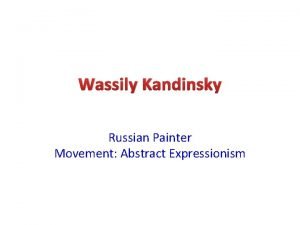


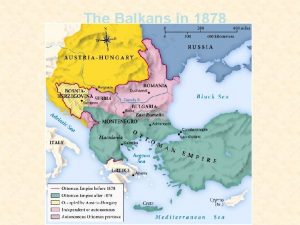
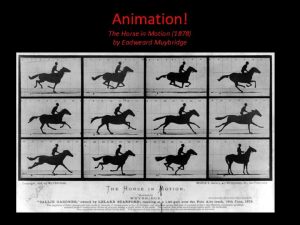

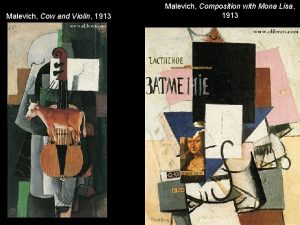

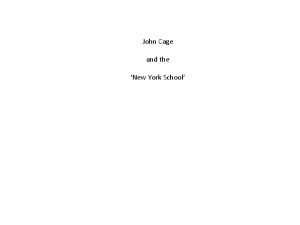
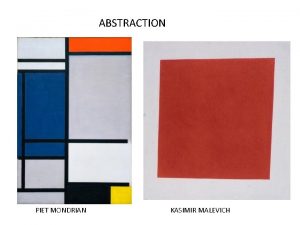


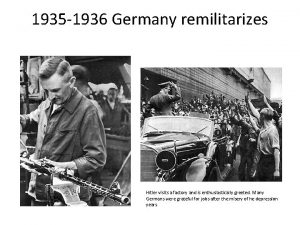
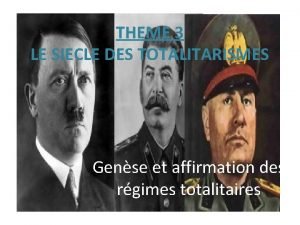


![Re sigsworth [1935] 1 ch 98 Re sigsworth [1935] 1 ch 98](https://slidetodoc.com/wp-content/uploads/2020/11/2622762_9c0b40fdfa873b88113dc8731de4a266-300x225.jpg)








